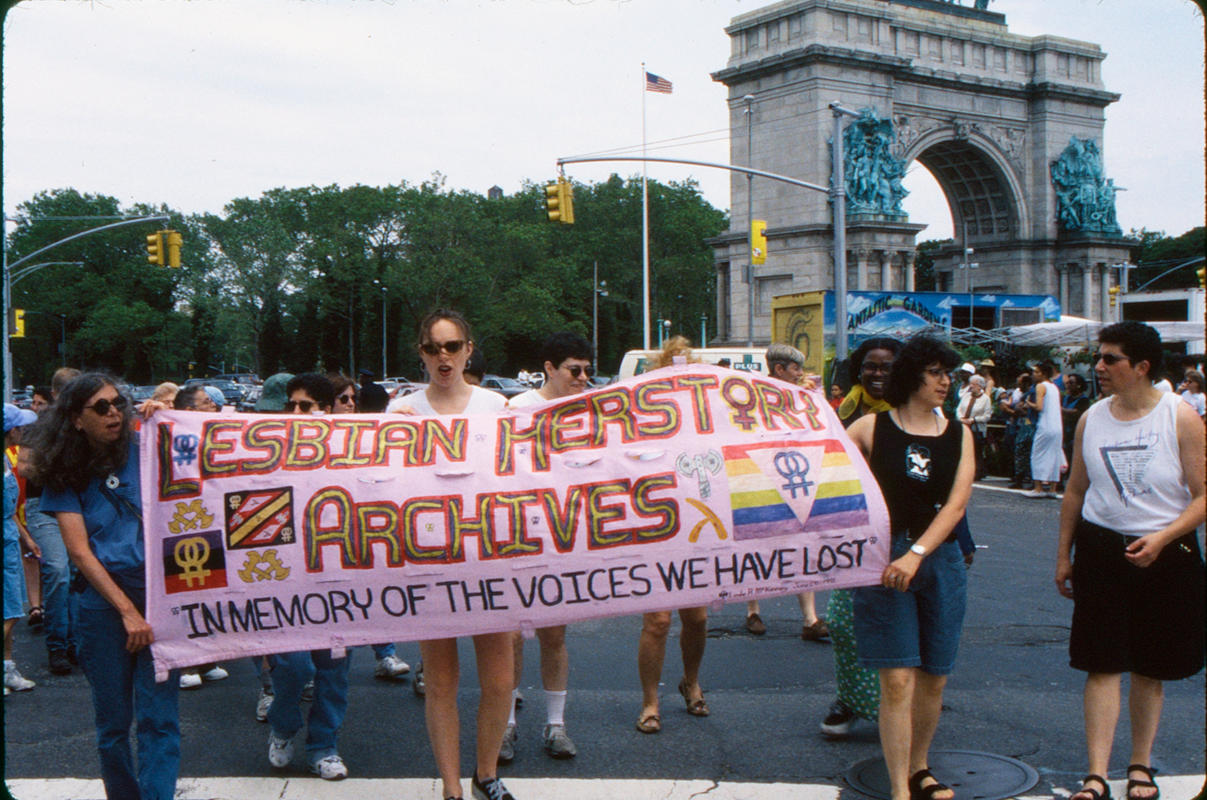
Brooklyn Pride March
overview
The first Brooklyn Pride Parade took place on Saturday, June 14, 1997, becoming the third such march to be organized in New York City after those in Manhattan and Queens.
Located in Park Slope, a popular residential neighborhood for lesbians, the march included a festival in nearby Prospect Park.
History
Following the success of the NYC Pride March, begun in 1970, and the Queens Pride Parade, begun in 1993, Brooklyn residents began planning for a march in their borough in the fall of 1996. Initial meetings were held at the LGBT Community Center in Manhattan before moving to a coffee shop on 5th Avenue and Garfield Place in Park Slope, Brooklyn. The event was co-chaired by Sonia Galarza, who was responsible for the march, and Jerry Allred, who took charge of the festival in Prospect Park. Dale Gates and other members and volunteers of Brooklyn Pride, Inc. were also involved. Danny Dromm and Maritza Martinez, co-chairs of the Queens march, provided crucial guidance in the planning stages. The gathering point for the first march, which took place on Saturday, June 14, 1997, was J.J. Byrne Park (since renamed Washington Park) at the corner of 5th Avenue and 3rd Street.
By the 1990s, Park Slope was a popular neighborhood with lesbians (some of whom affectionately referred to it as “Dyke Slope”) and their families, and a number of lesbian-associated groups and businesses were located here. This made the area particularly appealing for the march. A month prior to the event, banners advertising the march lined 7th Avenue, then the neighborhood’s main corridor. To ensure visibility, the route was designed to run along busy streets, which included walking north on 7th Avenue, east on Union Street, and south on Prospect Park West. Marchers then entered Prospect Park at 15th Street, where a stage for the festival was placed at the end of the roadway in the park.
A diverse group of tens of thousands of people attended the first march. Participating groups in 1997 included elected officials, the Lesbian Herstory Archives, Radical Faeries, and the Lambda Independent Democrats of Brooklyn, among others. Panels from the NAMES Project AIDS Memorial Quilt, created in memory of those who passed away from AIDS, were also on display.
The third march, held in 1999, took place in the evening. Organized by Galarza, this is the only nighttime Pride march in New York City, and was inspired by other night marches held elsewhere in the country. Currently, the “twilight” march starts at Lincoln Place and ends at the corner of 5th Avenue and 9th Street. The multicultural festival takes place on 5th Avenue between 1st and 9th Streets. By the second or third year, a 5K race was included in the list of festivities.
The march’s success inspired ones in the Bronx and on Staten Island, first taking place in 1999 and 2005, respectively.
Entry by Amanda Davis, project manager (October 2019), and made possible by the New York State Council on the Arts with the support of Governor Andrew M. Cuomo and the New York State Legislature.
NOTE: Names above in bold indicate LGBT people.
Sources
“Brooklyn Pride Guide,” 2016, Brooklyn Pride, Inc., bit.ly/2kdKrcg.
Jerry Allred, phone call with the NYC LGBT Historic Sites Project, 2019.
Sonia Galaraza, interview with the NYC LGBT Historic Sites Project, 2019.
Do you have more information about this site?
This project is enriched by your participation! Do you have your own images of this site? Or a story to share? Would you like to suggest a different historic site?





